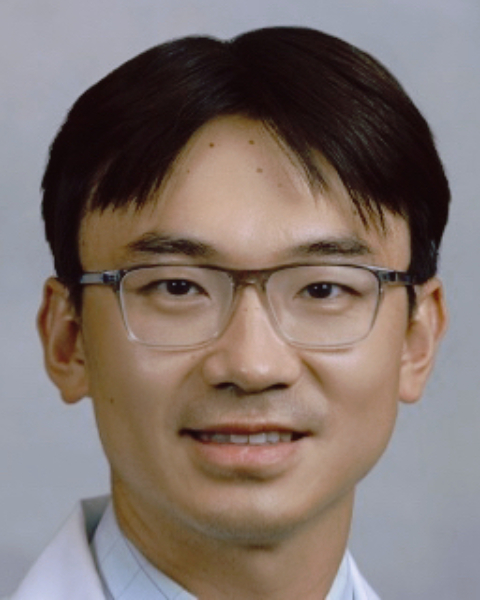PQA 02 - PQA 02 Physics Poster Q&A
2297 - RadAIonc: Enhancing Decision-Making in Radiation Oncology with a GPT-4-Based Prompt-Driven Large Language Model
Sunday, September 29, 2024
4:45 PM - 6:00 PM ET
Location: Hall C
Screen: 30

Bin Han, PhD
Stanford University
Palo Alto, CA
Presenter(s)
B. Han1, Y. Chen2, M. K. Buyyounouski2, M. F. Gensheimer3, and L. Xing1; 1Department of Radiation Oncology, Stanford University, Stanford, CA, 2Department of Radiation Oncology, Stanford University School of Medicine, Stanford, CA, 3Radiation Oncology, Stanford University, Stanford, CA
Purpose/Objective(s): Addressing the challenge of limitations imposed by uni-modal tasks in healthcare AI, we introduce RadAIonc, a specialized GPT-4 based Large Language Model (LLM). RadAIonc is engineered to enhance the complex workflows in radiation oncology, offering a streamlined and multifaceted solution. Materials/
Methods: RadAIonc leverages GPT-4s advanced computational capabilities through a novel prompt-driven methodology. This model exceeds the conventional boundaries of generating clinical reports by also proposing comprehensive radiation treatment plans. Our unique method eliminates the necessity for traditional model fine-tuning by utilizing complex, expertly crafted prompts that simulate the intricate decision-making processes of oncology specialists. This results in RadAIonc delivering precise, contextually relevant responses. We further developed a custom prompt-driven framework to improve the accuracy and efficiency of identifying optimal treatment options, covering aspects like equipment selection, dosing, and techniques. The models outputs are thoroughly evaluated by clinical professionals against established benchmarks for accuracy and relevance.
Results: In trials focused on prostate and head and neck cancers, RadAIonc demonstrated superior performance in critical tasks within oncology, surpassing standard GPT-4 outputs. Clinical reports and treatment recommendations from RadAIonc were rated, on average, 0.5 points higher by expert reviewers than those from the base GPT-4 model. Moreover, the integration of an advanced segmentation framework markedly enhanced the models efficiency in processing complex imaging data, facilitating more streamlined treatment planning processes. These improvements highlight significant strides in operational efficiency and accuracy, positioning RadAIonc as a leading innovator in radiation oncology patient care and treatment strategy.
Conclusion: RadAIonc represents a powerful and flexible tool that mirrors the intricate clinical decision-making process in Radiation Oncology. Its pioneering application of GPT-4’s prompt-driven features not only refines clinical workflows but also heralds substantial progress in enhancing the quality and precision of patient care. The models proven efficacy across diverse tasks and contexts emphasizes its potential as a transformative resource in the field.
Purpose/Objective(s): Addressing the challenge of limitations imposed by uni-modal tasks in healthcare AI, we introduce RadAIonc, a specialized GPT-4 based Large Language Model (LLM). RadAIonc is engineered to enhance the complex workflows in radiation oncology, offering a streamlined and multifaceted solution. Materials/
Methods: RadAIonc leverages GPT-4s advanced computational capabilities through a novel prompt-driven methodology. This model exceeds the conventional boundaries of generating clinical reports by also proposing comprehensive radiation treatment plans. Our unique method eliminates the necessity for traditional model fine-tuning by utilizing complex, expertly crafted prompts that simulate the intricate decision-making processes of oncology specialists. This results in RadAIonc delivering precise, contextually relevant responses. We further developed a custom prompt-driven framework to improve the accuracy and efficiency of identifying optimal treatment options, covering aspects like equipment selection, dosing, and techniques. The models outputs are thoroughly evaluated by clinical professionals against established benchmarks for accuracy and relevance.
Results: In trials focused on prostate and head and neck cancers, RadAIonc demonstrated superior performance in critical tasks within oncology, surpassing standard GPT-4 outputs. Clinical reports and treatment recommendations from RadAIonc were rated, on average, 0.5 points higher by expert reviewers than those from the base GPT-4 model. Moreover, the integration of an advanced segmentation framework markedly enhanced the models efficiency in processing complex imaging data, facilitating more streamlined treatment planning processes. These improvements highlight significant strides in operational efficiency and accuracy, positioning RadAIonc as a leading innovator in radiation oncology patient care and treatment strategy.
Conclusion: RadAIonc represents a powerful and flexible tool that mirrors the intricate clinical decision-making process in Radiation Oncology. Its pioneering application of GPT-4’s prompt-driven features not only refines clinical workflows but also heralds substantial progress in enhancing the quality and precision of patient care. The models proven efficacy across diverse tasks and contexts emphasizes its potential as a transformative resource in the field.
